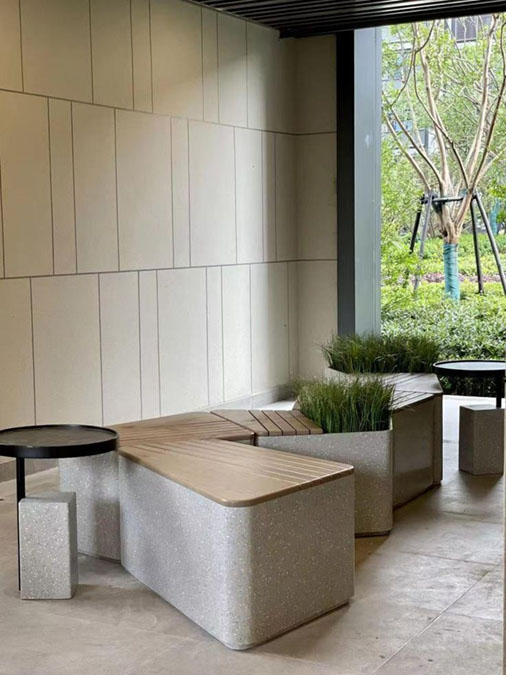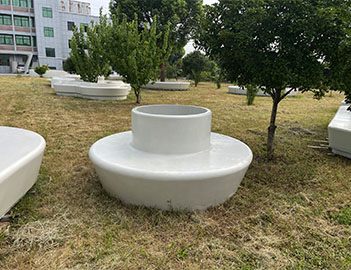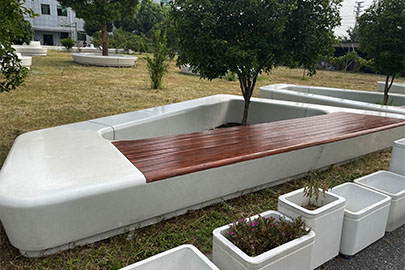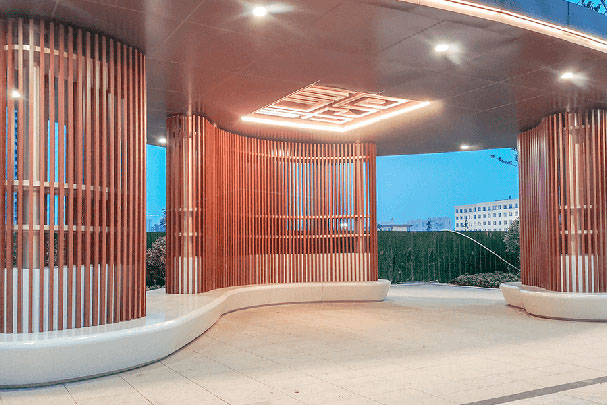With the acceleration of urbanization, people increasingly desire to live in vibrant environments that foster a sense of belonging. Public spaces serve as the carriers of urban life, bearing the important mission of promoting community cohesion and residents’ happiness. Glass Fiber Reinforced Cement (GRC), with its unique properties, has become a new favorite in the design world in recent years. This paper aims to explore how GRC furniture can enhance community cohesion and residents’ happiness through innovative design applications in community public spaces.
Characteristics and Advantages of GRC Furniture
GRC materials exhibit unique advantages such as being lightweight, high-strength, and weather-resistant, showcasing distinctive benefits in outdoor furniture design. Compared to traditional materials, GRC is not only aesthetically pleasing and durable but also customizable according to designers’ needs, allowing for more artistic creations. These features enable GRC furniture to blend seamlessly into natural settings, adding beauty to public spaces.
Innovative Design Promoting Interaction Among People
Multi-functional Design
GRC furniture can be designed to serve multiple purposes, such as benches that combine seating with storage or rest areas that double as children’s play facilities. Such designs not only save space but also increase the functionality of public amenities, encouraging more residents to use them and promoting interaction among people.
Customization and Personalization
The flexibility of GRC materials allows designers to create customized designs based on the cultural characteristics of specific communities. For example, setting up sculptural seats adorned with local cultural symbols at the entrance of a community not only beautifies the environment but also evokes a sense of identity and increases a sense of belonging among residents.
Enhancing Community Cohesion and Residents’ Happiness
Through the application of these innovative designs, GRC furniture not only enhances the functionality and aesthetics of community public spaces but also promotes interaction and communication among residents. When people are willing to step out of their homes and participate in public activities, the vitality of the community is enhanced. Moreover, furniture designs that reflect local culture deepen residents’ emotional attachment to their community, thereby strengthening community cohesion and enhancing overall resident happiness.
Conclusion
In summary, GRC furniture demonstrates significant potential in community public spaces due to its unique material properties and design flexibility. Through innovations such as multi-functionality, customization, and barrier-free design, GRC furniture can effectively promote interaction and communication among people, thereby enhancing community cohesion and residents’ happiness. As technology advances and design concepts continue to evolve, we have every reason to believe that GRC furniture will play an even more important role in community development.
Post time: Oct-11-2024




